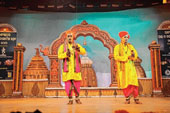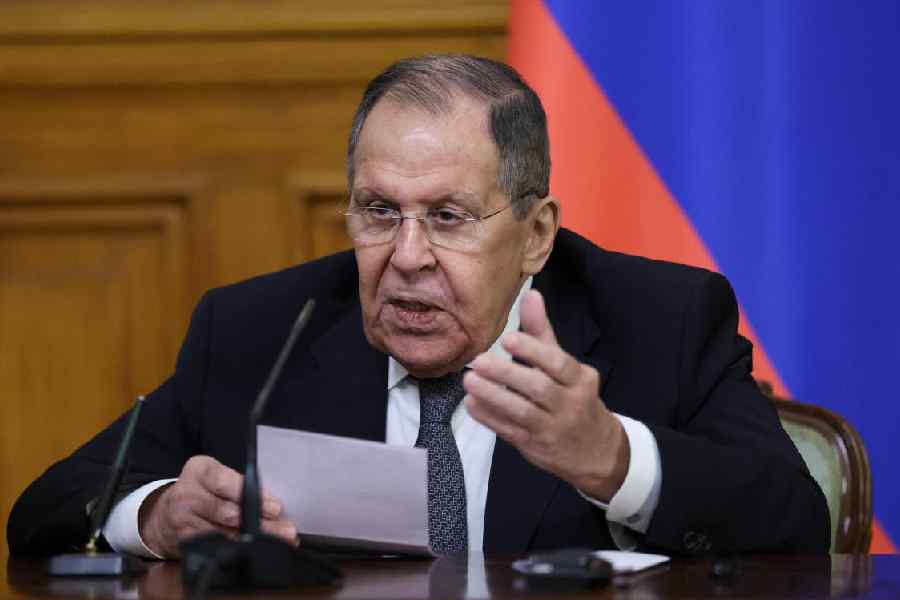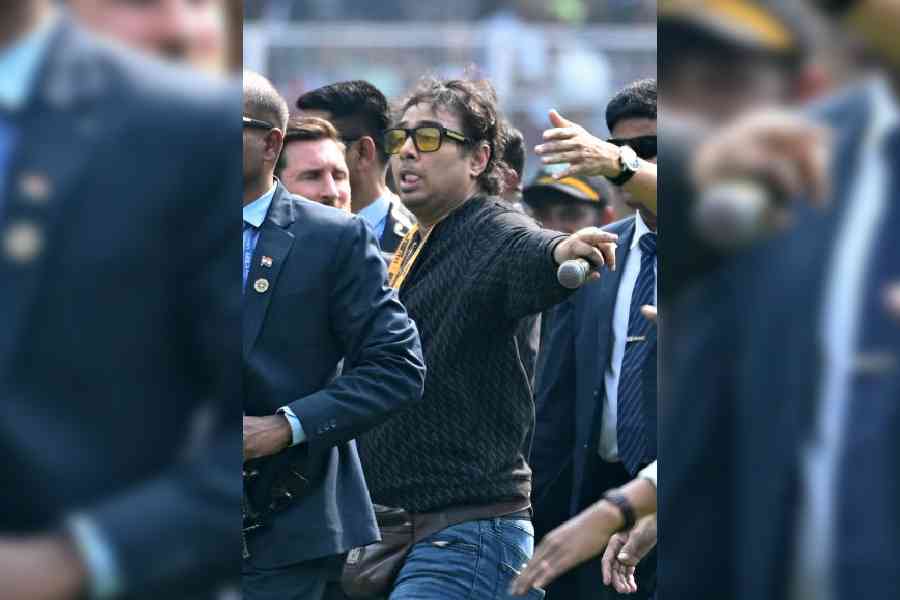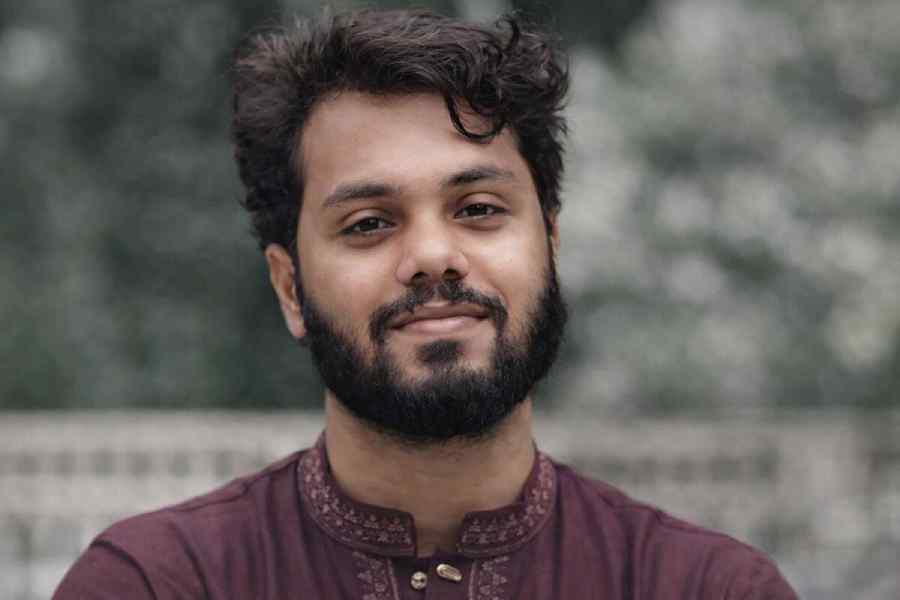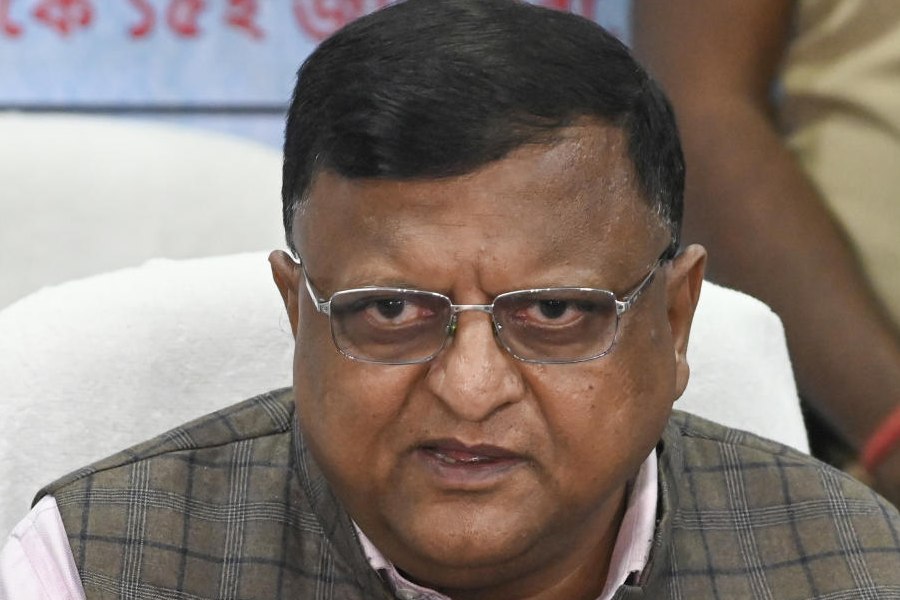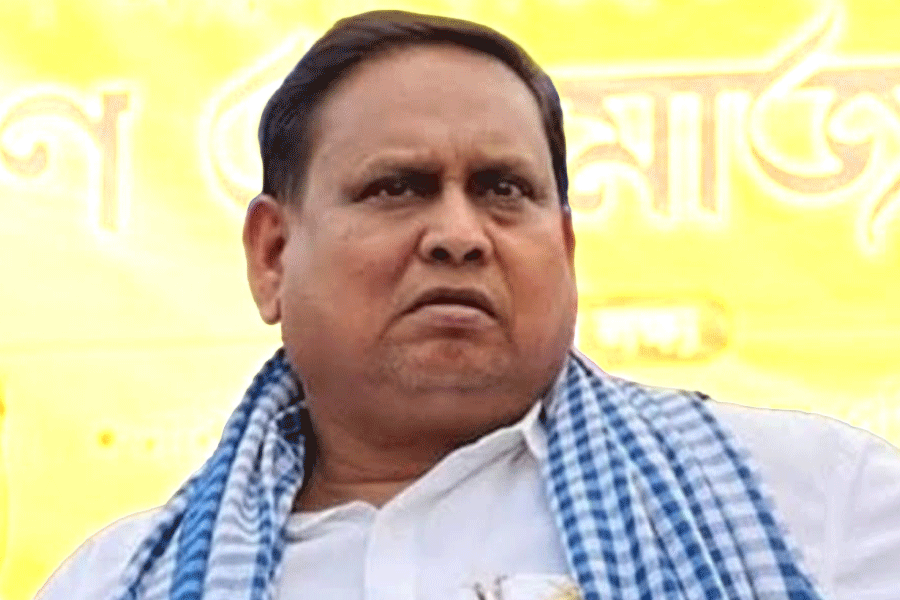 |
| Artistes Gayaka Ratna Rabinarayan Satpathy and Sisir Kumar Satpathy perform Dasakathia in Bhubaneswar. Telegraph picture |
Bhubaneswar, April 9: An ancient form of performing art, Dasakathia, once extremely popular across the state, is on the verge of losing its identity.
Many practitioners of the art form are battling penury and not even a handful of the younger generation is opting to learn and propagate Dasakathia.
Dasakathia, which dates back to as early as 17th century, is believed to have originated in Ganjam district to popularise mythological texts among people of all classes of the society.
During the performance, traditionally, the main singer is accompanied by a palia, who sings along and at times completes the lines begun by the lead singer.
The duo converse in between the singing and add humorous elements to keep the audience interested. The singing is accompanied by the playing of an instrument held in the palm to create beats.
“The Dasakathia artistes used to be invited at all significant social occasions and gatherings. This trend was intact even a couple of decades ago. However, the advent of new ways of social entertainment has to a great caused decline in public interest, especially in urban areas,” said Surendranath Dash Sharma, a prominent Dasakathia artiste and a member of the Nikhila Utkala Dasakathia Kalakar Sangha, the state-level association of all Dasakathia artistes.
About 200 Dasakathia artistes from various parts of Odisha, including Ganjam, Nayagarh, Khurda, Puri, Gajapati, Sundergarh and areas, congregated in Berhampur on March 30 and 31 to express their concern over the plight of the artistes.
They took part in the two-day All-Odisha Dasakathia Kalakar Sangha’s 33rd annual event at Uttareswar Bhavan.
At present, there are 130 Dasakathia groups all over the state. Ganjam alone has 85 groups, while the rest are in Nayagarh, Dhenkanal and Koraput.
However, since the number of programmes have decreased over the years, the art form might be in danger in future feel the artistes.
“Earlier people used to invite our groups for all social events. But now these performances have reduced to half. We are glad that various departments of the state government keep giving us the communication and awareness responsibilities for several schemes in rural areas. This helps us earn a little,” said another veteran artiste Bhabani Shankar Dash from Hinjilikatu in Ganjam. “Yet, Dasakathia is not a lucrative profession. It never was. But it was the art that pulled us. Today’s generation is looking for better prospects of income,” he said.
The major concern of the present artistes is the lack of interest of the younger generation to learn the art form.
“My sons pursued jobs in many states after their education. I could have done the same. But, I rejected job offers and learnt the art from my father,” said Surendranath.
“In fact, this is the biggest threat to the art form. Many artistes died without being able to train new artistes, and with them, their distinct style came to an end. Most of us practicing artistes are in our 50s and 60s or more. We dread the future since we need saviours, who show the zeal to carry forward the once highly popular Dasakathia,” he said.
The Sangha has demanded to include every Dasakathia artiste for life insurance, setting up of training centres at various parts of the state, inclusion of the artistes in every district, state and national-level festivals, increase the amount of allowance for them from Rs 1,000 to Rs 4,000, a permanent building for the association office at Belagaon under Hinjili block in Ganjam district.
Upendra Panigrahi, president All-Odisha Dasakathia Kalakar Sangha said the Dasakathia artistes were most neglected.
“The colourful and popular performance of Dasakathia is in doldrums because of the advent of television, cinema and other forms of modern entertainment,” Upendra said. But, the tradition must go on, he said.
District culture officer of Ganjam, Krushna Chandra Nishank suggested some change in the contents of the traditional Dasakathia to attract the youngsters to make a career in Dasakathia.
“The artistes must settle a midway for its easy adaptability while keeping the tradition alive,” he said.
A culture department official said formation of the Zilla Kalla Sanskruti Sangha (ZKSS) three years ago was for the purpose of identifying the dying art forms at district levels and helping the artistes get livelihood and preserve their art.
“After the formation of the ZKSS we have been able to entrust awareness programmes for rural areas through powerful and powerful art forms such as Dasakathia. Yet, it is true we are yet to come up with a plan to tap young artistes. We are considering to implement training and scholarship schemes to attract new artistes in future,” said Basudev Malbisoi, state co-ordinator of the ZKSS.

